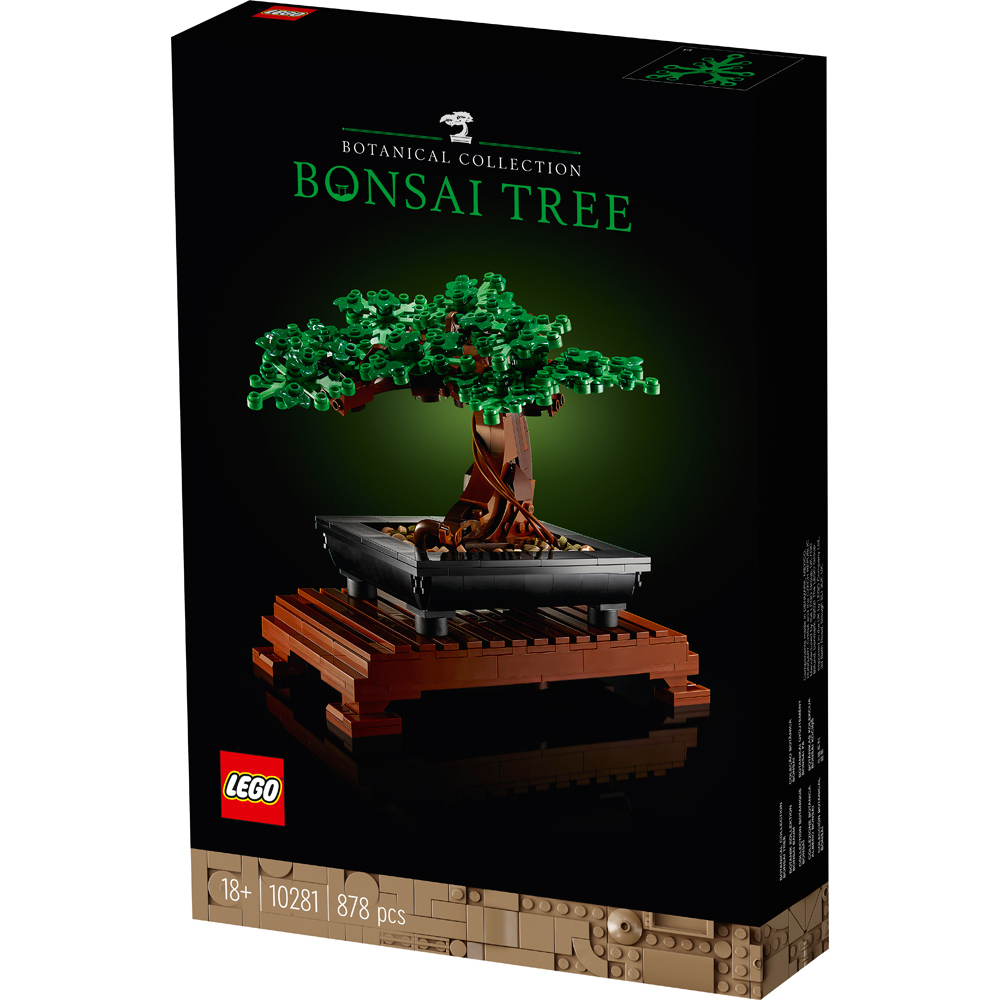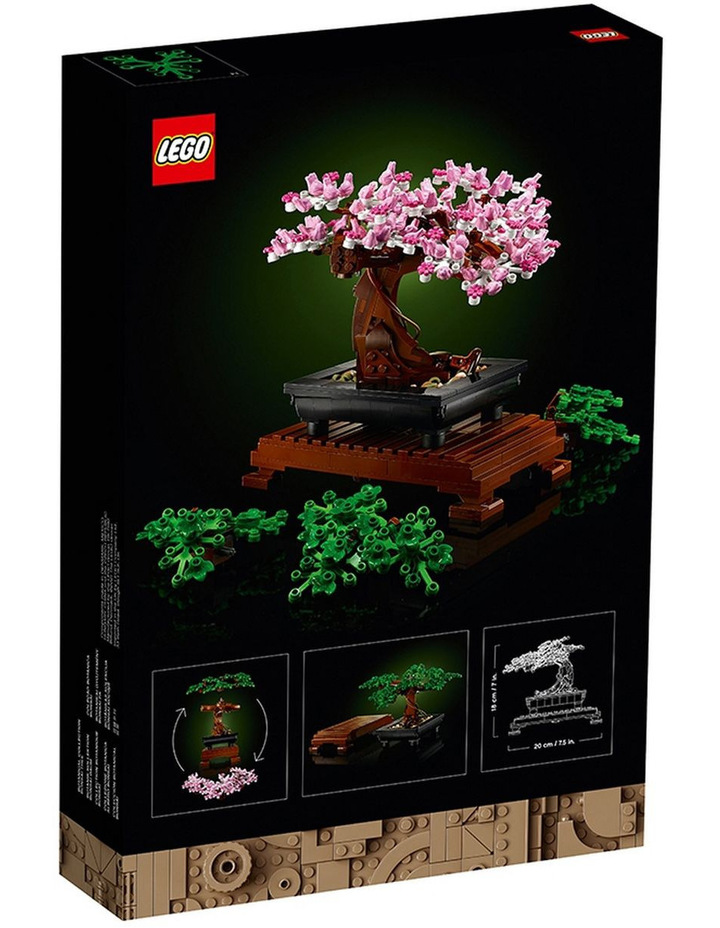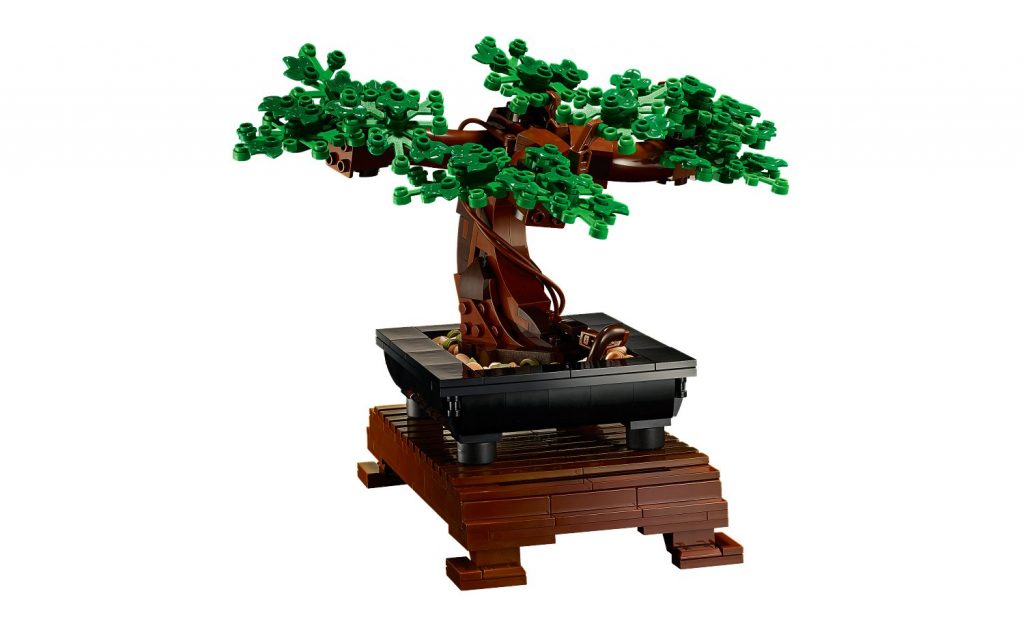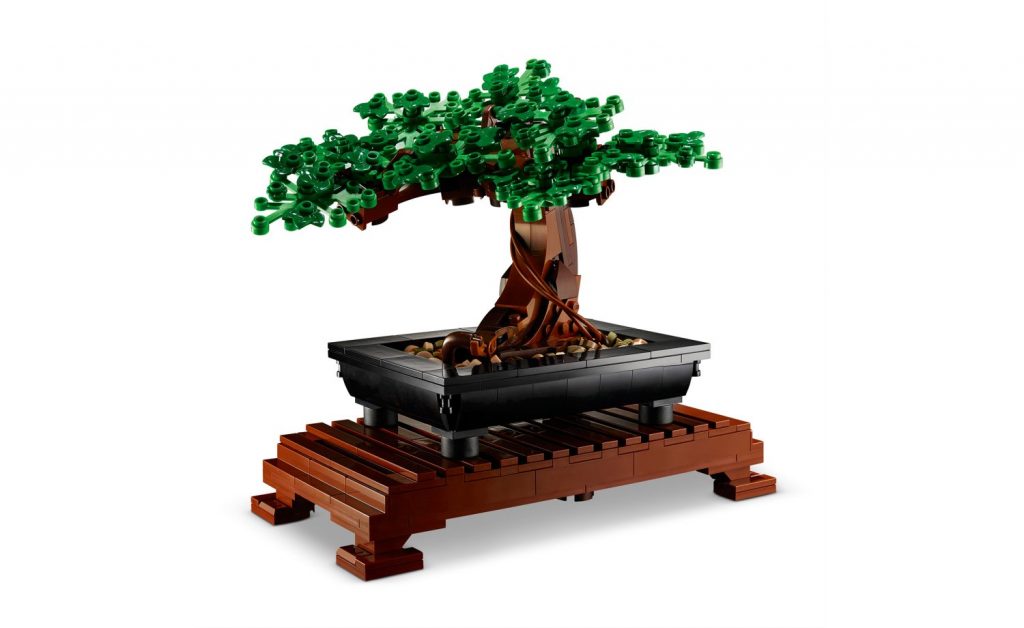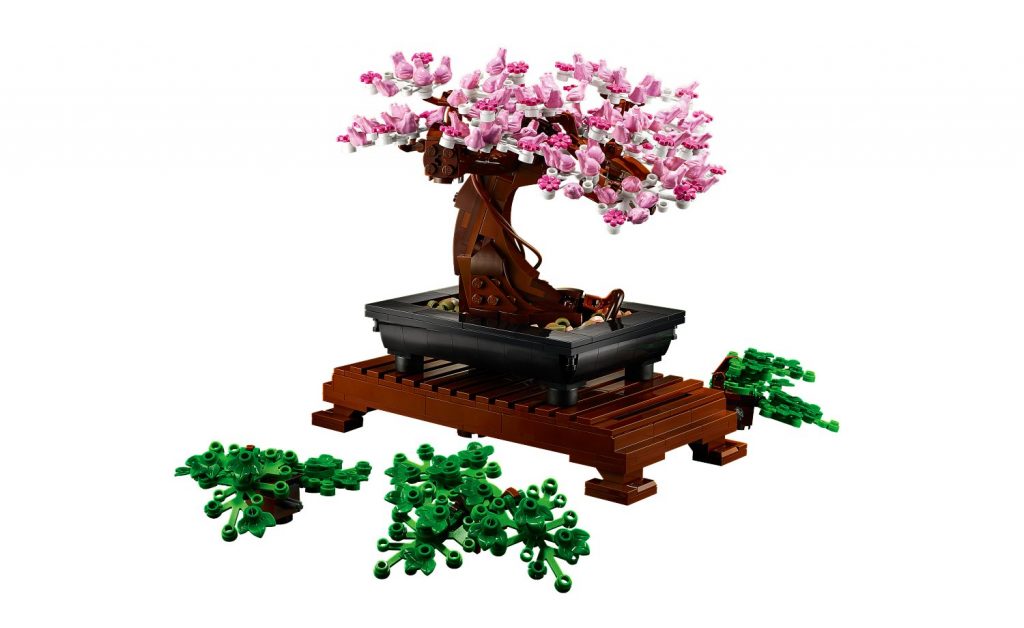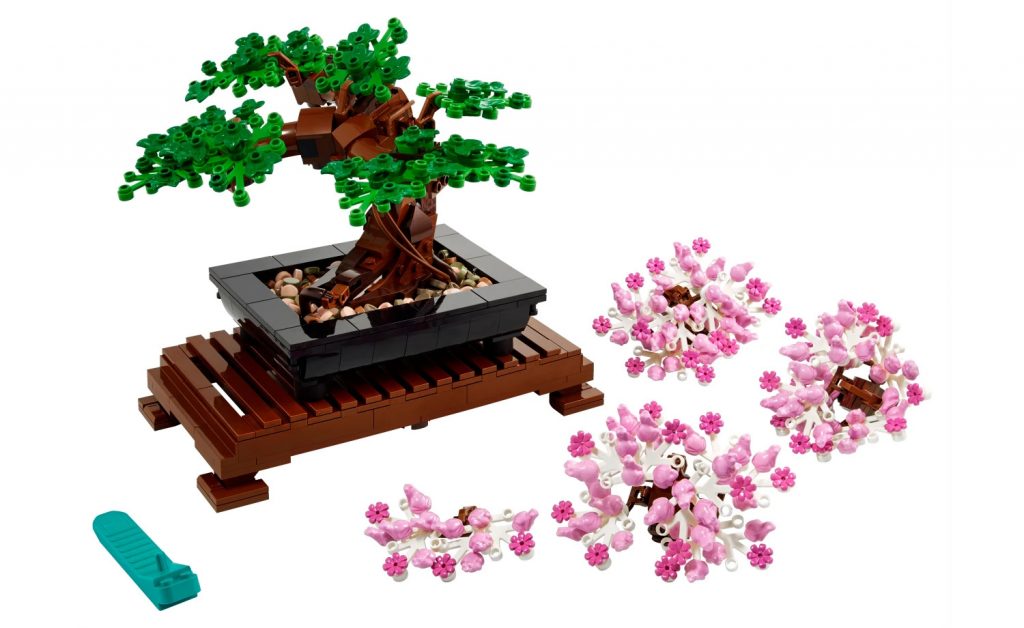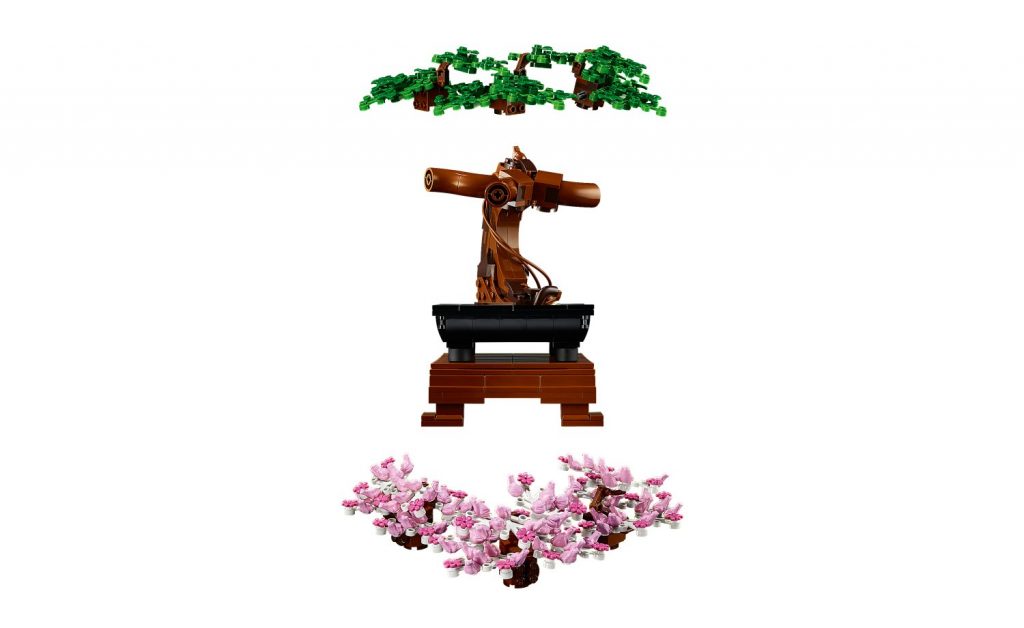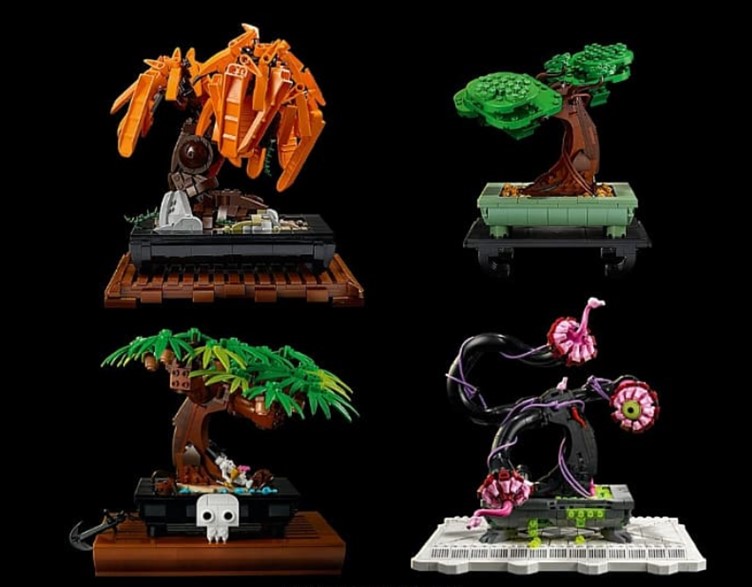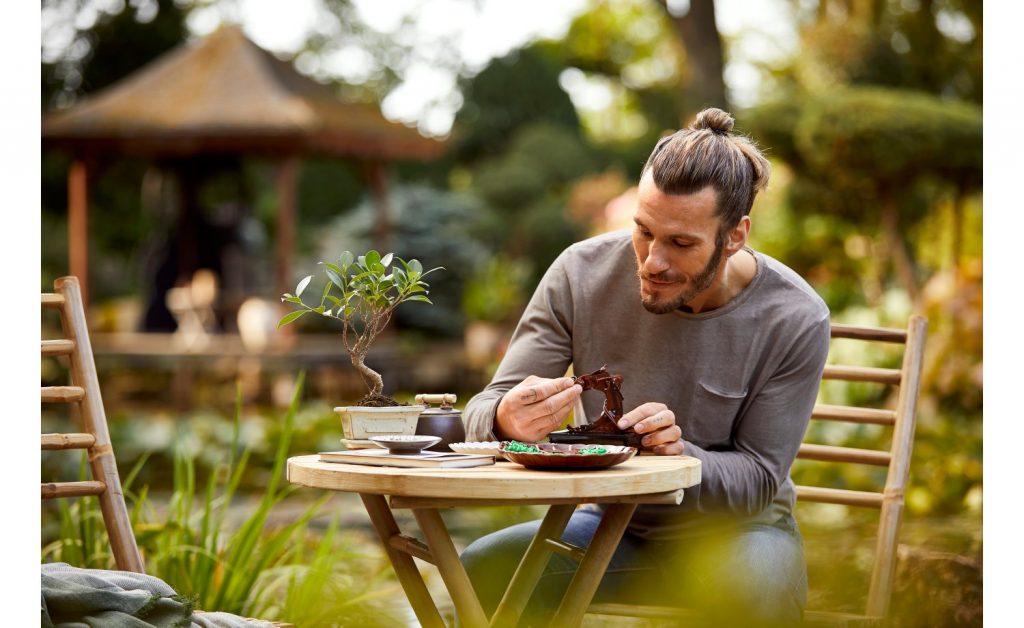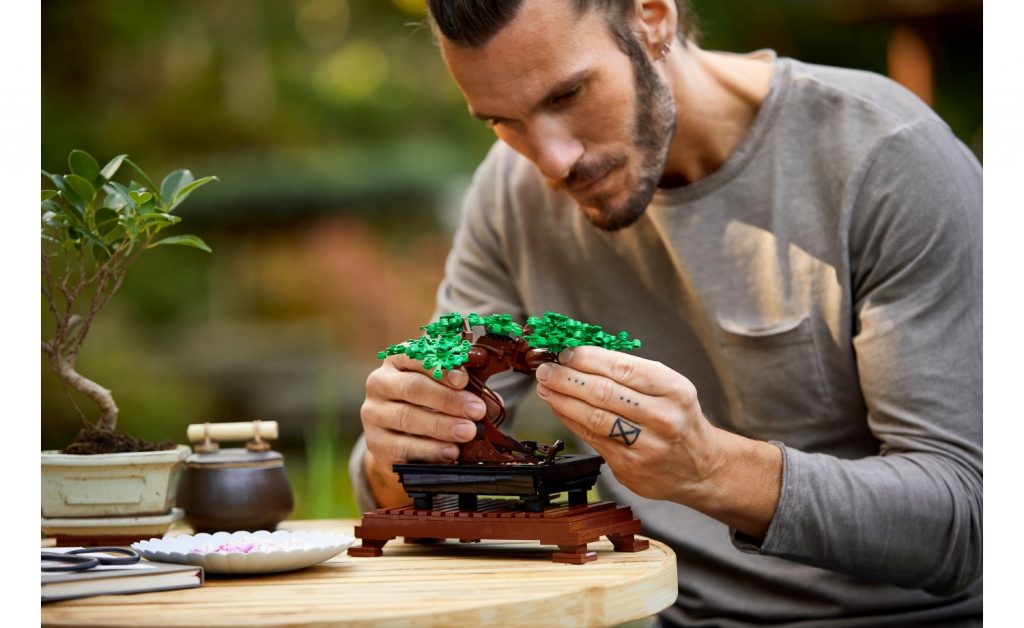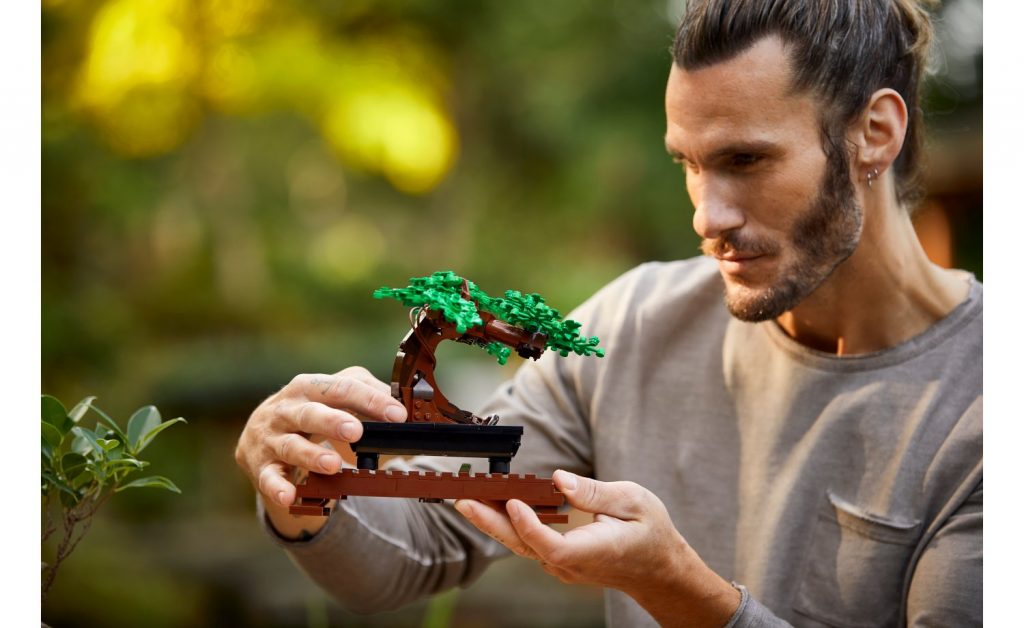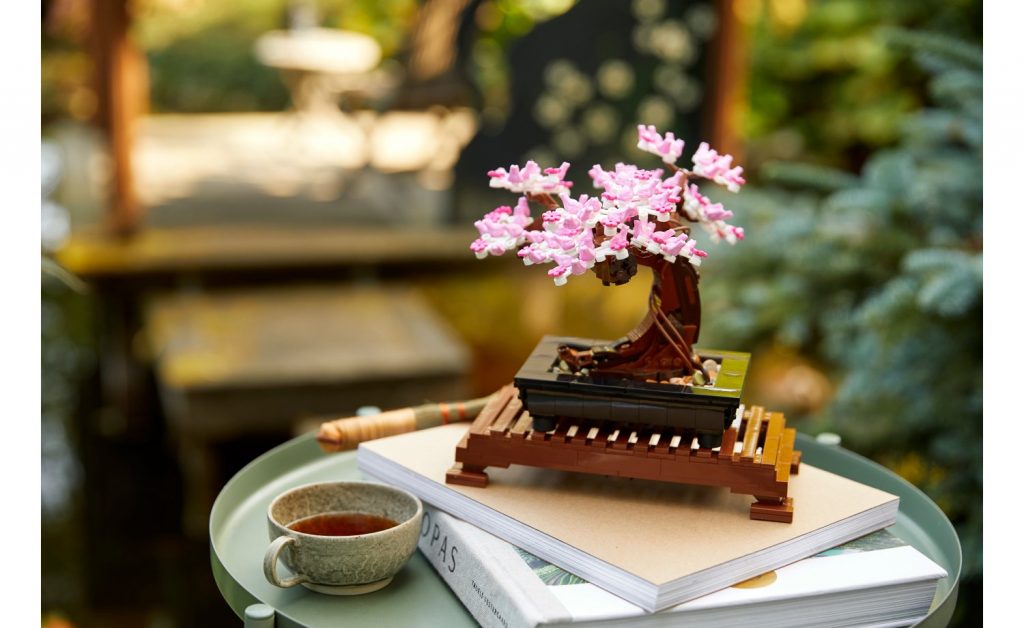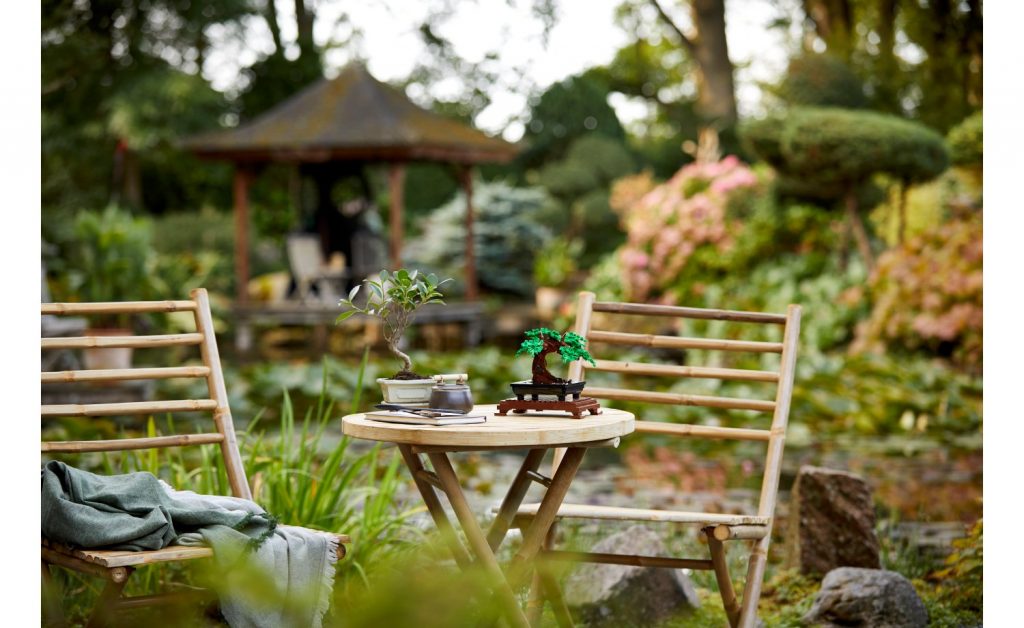By Joanna Jezewska (SAFOLs Member, jhbLUG Member)
Is there such a thing as too many pink LEGO® frogs?
LEGO® set 10281 Bonsai Tree from the Botanical Collection sets out to prove that the answer is no, there is no such thing as too many pink LEGO® frogs.
Presentation
LEGO® Bonsai Tree embarks on bringing the long-held tradition of growing miniature trees, which originated over 2000 years ago in China, to the world of LEGO®. It does so in a sophisticated manner, embracing its new 18+ adult focused branding (read: plain black background means this is surely not a toy for kids anymore!). If the aim was to entice not only the avid fans of LEGO®, but adults looking for an interesting creative outlet and something that would not look out of place on an office desk or coffee table, then I personally feel that LEGO® succeeded with its presentation. The instruction booklet which comes with the set, continues the 18+ branding, but I am happy to confirm that when it comes to the actual set building part of the instructions, the background is a light greyish blue, making the steps easy to understand and follow.
The Build
The set gives the builder an opportunity to build various components of a bonsai tree.
The actual black bonsai pot build is simplistic but cleverly utilises rubber tyres as its feet for the pot ensuring that the bonsai tree will not slide around too easily on any table or display shelf.
The tree itself was a fantastic build full of interesting part usage and unusual techniques. It plays around with differing shades of brown and shapes to create an organic looking bonsai trunk complete with roots, twisting vines and bending branches.
Once the tree trunk is inserted into the bonsai pot, 200 one stud sized round tiles meant to resemble pebbles are used to fill up the bonsai pot. These tiles are placed in four different coloured bags of 50 tiles which are meant to be opened and mixed before being placed into the bonsai pot. A word of caution be careful when you open these packets as picking up a lot of small pieces off the floor adds significant building time to this set!
Lastly, we are spoilt with two different types of foliage for the tree. The first foliage incorporates three different green plant elements to build a more traditional looking bonsai tree, with the slightly darker and smaller leaf pieces meant to look like juvenile shoots. This part of the build was also quite simplistic and given that each branch was built the same way, it was also quite repetitive. Where the LEGO® Bonsai Tree set really shines, in my opinion, is the building of the cherry blossom foliage. It is a mad mixture of white leaves, dark pink flowers and 100 light pink frogs, which when combined bring colour, height, drama, and texture to the Bonsai tree that just feels so organic. LEGO® designer Nicolaas Vas has developed a reputation for loving to insert frogs into the sets he has designed, but with his design of this set, it never feels like a gimmick but rather a necessity.
To encourage a quick change of foliage, the set is cleverly designed to easily unclip the clusters of leaves and insert the different foliage. Additionally, LEGO® Bonsai Tree encourages endless customisation and creativity with the instructions even showing some of the LEGO® designers’ own ideas for bonsai tree designs ranging from other realistic looking bonsai to truly fantastical creations. The sky (and your LEGO® budget) is the limit for what you can do with your creation.
Lastly, you have the option to build the bonsai pot stand which, with its reddish-brown long tile pieces, resembles a wooden slate stand often used to ensure proper drainage for bonsai pots (note: watering of this bonsai is strictly optional and not encouraged!). The stand is also an uncomplicated build and nicely completes the set.
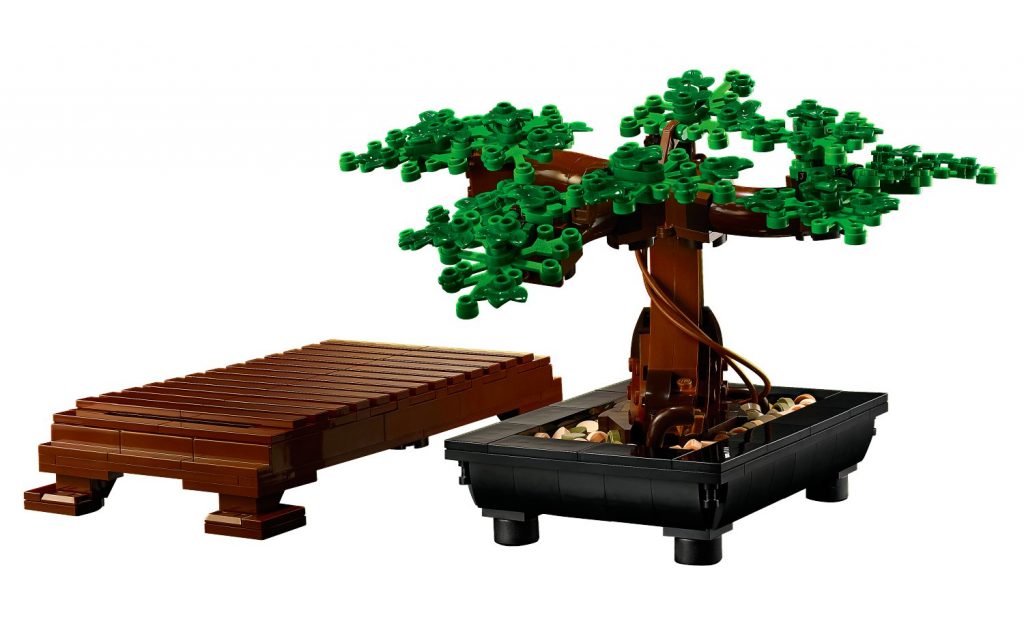
Coming in at a retail price of R999.99, is LEGO® Bonsai Tree worth it? Some of my thoughts around the pros and cons:
Pros:
- I love the customisation potential of this set. When building mine, I was inspired by the daffodils I saw blooming around us and added extra leaves and yellow flowers. I cannot wait to change it up every season;
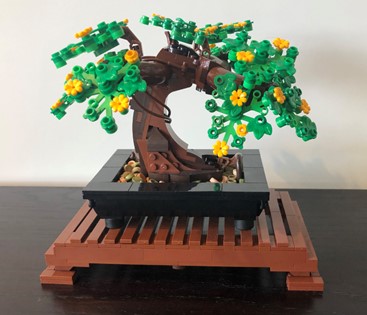
- Interesting build techniques for the tree itself and the cherry blossom foliage;
- An excellent set to display and really looks organic and beautiful; and
- The large green leaves, smaller white leaves, and brown root pieces are part of LEGO®’s “Plants from Plants” program intended to replace plastics made from fossil fuels with more-sustainable plant-based materials.
Cons:
- At 878 pieces, do not be fooled into thinking this is a large set. With 200 pebble pieces and 100 pink frogs (plus 1 brown one used in the tree trunk design) the actual set pieces come in at under 600 pieces. While it is not a tiny bonsai tree by any means, LEGO® Bonsai Tree can be built under an hour or two. Some may feel short-changed by the price given the actual time spent building;
- Speaking of pebble pieces, the inner perfectionist in me hates that the pebble pieces do not all face smooth side up. Somehow, I don’t think many people will be bothered with this;
- Not enough green foliage is given to really flesh the green traditional foliage out and create enough texture. To give perspective, I added quite a lot of smaller leaves to fill out the bonsai tree when I added the yellow flowers; and
- At times, the build is repetitive, but luckily not Taj Mahal level repetitive so it’s still enjoyable.
Given the huge worldwide demand for this set, and the number of times I have seen this set out of stock at various retailers, LEGO® Bonsai Tree certainly is proving to be popular. I could not wait to buy mine, and minor gripes aside, I loved it. It was well worth the hype and wait. With its customisation potential, this is a set that can be displayed and inspire creativity for many years to come.


